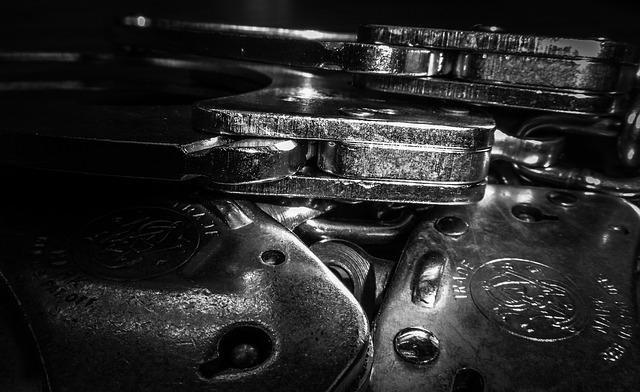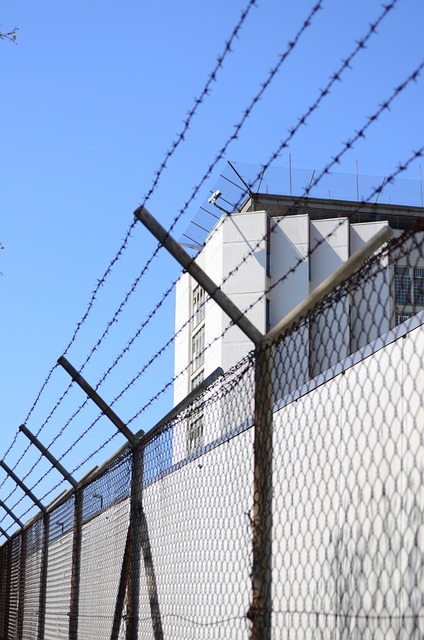Vehicle impoundment laws, crucial components of DUI regulations, temporarily sequester cars driven by accused impaired drivers, preventing further risk. Understanding regional variations is vital for defendants and law enforcement to navigate legal processes and ensure appropriate use of impound resources. Loopholes in procedures, stemming from outdated regulations or defense strategies, undermine public safety efforts. Enhancing vehicle impoundment, including immediate towing and clear guidelines, is key to closing loopholes and strengthening DUI law enforcement while balancing public safety and driver rights.
In the crosshairs of public safety and individual rights lies a delicate balance, particularly when discussing vehicle impoundment laws in the context of DUI (Driving Under the Influence) arrests. This article delves into the intricate web of regulations, exploring key aspects like understanding impoundment laws, the impact on property seizure during DUI arrests, and addressing loopholes that may arise. By examining these factors, we aim to enhance DUI law enforcement while safeguarding drivers’ due process rights, focusing on strategic solutions for a safer, more equitable system.
- Understanding Vehicle Impoundment Laws
- DUI Arrests and Property Seizure
- Loopholes in Impoundment Procedures
- Protecting Drivers' Rights
- Enhancing DUI Law Enforcement
- Balancing Safety and Due Process
Understanding Vehicle Impoundment Laws

Vehicle impoundment laws play a crucial role in enforcing DUI (Driving Under the Influence) regulations. When a driver is arrested for DUI, their vehicle may be impounded for several reasons. This process involves temporarily storing the vehicle until legal proceedings are concluded. Impoundment helps ensure that impaired drivers cannot operate their vehicles, thus reducing the risk of further accidents and public safety hazards.
Understanding these laws is essential for both individuals facing DUI charges and law enforcement agencies. Vehicle impoundment procedures vary by jurisdiction, so it’s important to be aware of local regulations. Knowing your rights and the steps involved in impoundment can help drivers navigate the legal process more effectively. Additionally, it aids law enforcement in managing impounded vehicles efficiently, ensuring that these resources are used appropriately to serve their intended purpose.
DUI Arrests and Property Seizure

DUI arrests often lead to significant legal consequences, including property seizure. When an individual is pulled over and arrested for driving under the influence (DUI), law enforcement officers may seize their vehicle as evidence. This process, known as vehicle impoundment, is a common practice aimed at deterring drunk driving and ensuring public safety.
Under current DUI laws, if an officer has probable cause to believe a driver is intoxicated, they can impound the vehicle for an extended period. This measure helps prevent repeat offenses and ensures that offenders cannot drive while their case is pending. It’s crucial for individuals facing DUI charges to understand these procedures and rights under the law to navigate the legal system effectively.
Loopholes in Impoundment Procedures

Loopholes in impoundment procedures have long been a concern within the realm of DUI law. These gaps often allow individuals accused of driving under the influence to evade immediate consequences, creating an uneven playing field for enforcement agencies and victims. Vehicle impoundment, a critical component of DUI prosecution, is frequently subject to legal maneuvering that can delay or even prevent the seizure of illicit vehicles.
Such loopholes may stem from outdated regulations, technicalities in legal interpretation, or strategic defense strategies employed by accused drivers. For instance, some legal challenges focus on procedural mistakes during impoundment, questioning the authority or timing of vehicle confiscation. Addressing these issues is essential to ensure that effective DUI enforcement can proceed without undue hindrance, upholding public safety and justice.
Protecting Drivers' Rights

In the ongoing battle against drunk driving, laws like DUI (Driving Under the Influence) have significantly evolved to protect public safety. However, loopholes in Vehicle Impoundment procedures can sometimes undermine these efforts. When a driver is caught behind the wheel while impaired, immediate action is crucial. Prompt impounding of the vehicle serves as a deterrent and ensures that the individual cannot continue endangering others on the road.
Protecting drivers’ rights remains paramount, even in such stringent cases. Fair processes must be in place to ensure that any impoundment is legally sound, with clear guidelines on storage fees, hearing rights, and the duration of vehicle retention. Balancing public safety with due process is essential to maintaining a just and effective DUI law enforcement system.
Enhancing DUI Law Enforcement

In many regions, gaps in DUI (Driving Under the Influence) laws have been a significant concern, allowing offenders to exploit loopholes and evade justice. One crucial area for improvement is enhancing vehicle impoundment procedures. Currently, some legal ambiguities enable drivers caught drunk to avoid immediate impoundment, providing them with an opportunity to escape accountability.
Closing this loophole involves streamlining processes to ensure that vehicles of DUI suspects are promptly secured. Stricter regulations can mandate that law enforcement officers have the authority to tow and impound vehicles at the scene of a DUI arrest, preventing drivers from using their cars as a means to evade capture or destroy evidence. This strategic move will enhance DUI law enforcement by eliminating a common tactic employed by intoxicated drivers.
Balancing Safety and Due Process

In the pursuit of enhancing road safety, particularly in cases involving suspected drunk driving (DUI), a delicate balance must be struck between stringent enforcement and due process rights. Vehicle impoundment, as a measure to deter and punish DUI offenders, has been a contentious issue. While it serves as a powerful deterrent, it also raises concerns about individual liberties and fair procedure. The challenge lies in implementing laws that safeguard the public without infringing upon suspects’ constitutional rights.
To achieve this balance, legal frameworks must ensure transparency and clear guidelines for vehicle impoundment during DUI investigations. Due process demands that individuals facing such actions be informed of their rights, the reasons for impoundment, and have a chance to challenge these decisions. This approach not only upholds the rule of law but also fosters public trust in the justice system, ensuring that safety measures do not become tools of arbitrary power.
Closing loopholes in vehicle impoundment procedures is essential for balancing safety, due process, and drivers’ rights. By understanding and enhancing DUI law enforcement, particularly regarding property seizure and impoundment, we can create a more equitable system. Drivers must be protected from arbitrary actions while ensuring that effective measures are in place to deter drunk driving. Streamlining impoundment laws and procedures will contribute to safer roads by reducing the potential for abuse and protecting the rights of all road users.






